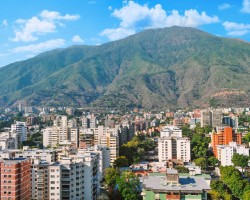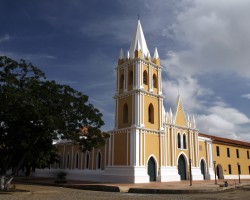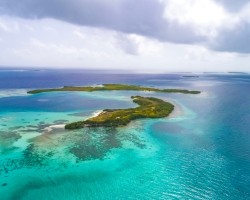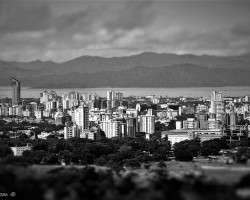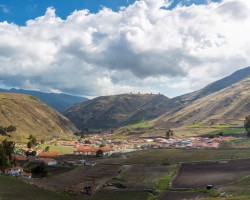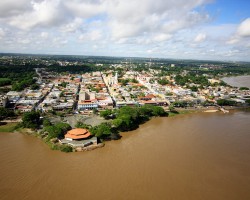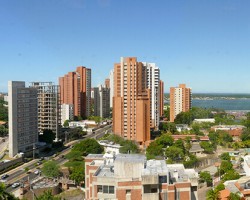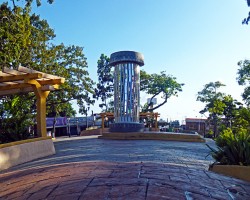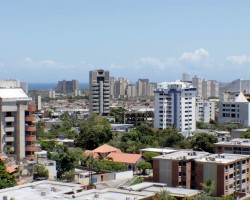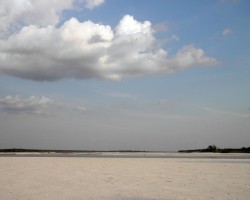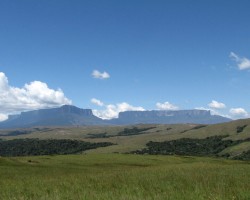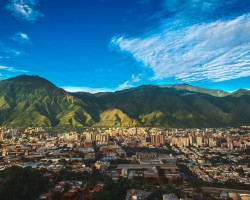Best time to go to Venezuela for a perfect weather and where to go?
When is the best time to go to Venezuela?
The best time to visit Venezuela is during the dry season, which runs from December to May. However, a trip can be made year-round, depending on the experiences you wish to have on-site and the regions you prefer to visit.
- For sunny holidays and a relaxing stay along the Caribbean coast, the dry season is certainly the best choice. You will then be able to fully enjoy the beach! Only the archipelagos of Los Roques or Las Aves have a favorable climate almost all year round.
- For diving or snorkeling to discover the fantastic underwater landscapes of the country, especially in the Los Roques archipelago, a trip is possible whenever you want, but visibility is better from December to May.
- If you dream of immersing yourself in Venezuelan culture, the months of February to April are perfect, as this is when the festivities are most numerous between Carnival, Holy Week, and Easter.
- For hiking in the Andes, ideally travel between December and February. This is when the rains are the least intense and the trails are the most passable.
- If the goal of your trip is wildlife observation, particularly in the Llanos, travel in November or December.
- The rainy season should not be ruled out: thanks to the ambient humidity, this is when nature is most lush and the landscapes are the most breathtaking. Moreover, the showers reveal the splendor of the Salto Angel Falls, with a significant water flow. Between June and September, the center and northwest of the country experience pleasant temperatures, and the downpours are short-lived.
- When to visit Venezuela to avoid crowds? The high season lasts from June to September, and the very high season is in December. It is therefore advisable to avoid these periods if you want peace and quiet, especially since prices soar. The rest of the year, the country is much more affordable and calm, especially if you avoid school holidays and major public celebrations, such as Carnival.
To summarize, the best months to visit Venezuela, while enjoying great weather, fewer crowds, and reasonable prices, are January, March, April, and May.
Where and when to go based on the weather?
Andes
Mérida (Venezuela), San Cristóbal, Valera...
Central Coast of Venezuela
Los Roques Archipelago, Maracay, Catia La Mar...
Guayana
Santa Elena de Uairén, Ciudad Bolívar, Tucupita...
Los Llanos
Caracas, San Fernando (Venezuela), Calabozo...
North West of Venezuela
Coro, Maracaibo, Punto Fijo...
Northeast of Venezuela
Porlamar, Maturín, Carúpano...
To get all the information about the climate and weather in Venezuela for a specific month, click on the corresponding link below:
Venezuela in january Venezuela in february Venezuela in march Venezuela in april Venezuela in may Venezuela in june Venezuela in july Venezuela in august Venezuela in september Venezuela in october Venezuela in november Venezuela in december
Best time to travel to Venezuela by cities
Climate and Weather in Venezuela
Venezuela is located in the northern part of South America, just above the equator. It has nearly 3000 km of coastline, which opens onto both the Caribbean Sea and the Atlantic Ocean. The country shares borders with Brazil, Colombia, and Guyana.
Due to its geographical position and its reliefs, the climate of Venezuela is of different types:
- A tropical savanna climate with a dry winter is largely predominant as it covers 79% of the territory, particularly in the capital, Caracas.
- A dry and hot steppe climate is found in the northeast of the country, in the Puerto La Cruz region, as well as in the northwest, near Coro.
- An equatorial climate, with abundant rainfall and a constant temperature throughout the year, prevails around Santa Elena, near the Brazilian border.
- Less commonly, a tropical monsoon climate can be observed around Puerto Ayacucho in the Amazon, and a temperate oceanic climate in the Venezuelan Andes mountains.
Generally speaking, the weather is much cooler in the mountains located in the west of the country, with sometimes winter conditions at the highest altitudes. The lower regions receive little precipitation, except in the Amazon, where rain falls year-round and humidity levels are very high. On the coast, the weather is rather dry and sunshine is more abundant than elsewhere due to the presence of trade winds, these constant winds coming from the northwest. Furthermore, temperature variation is low, regardless of the season, but also between day and night in the lower regions.
The weather in Venezuela is marked by two distinct periods:
- The rainy season lasts from June to November. It is also called invierno (winter), even though temperatures are generally quite high throughout the country. As its name suggests, this is the time when it rains the most, especially in the Guayana region. Elsewhere, showers generally occur in the late afternoon or at night, and the sun quickly returns. However, July and August are prone to hurricanes that form in the Caribbean and can pass through Venezuela towards the end of their path. Therefore, it is advisable to be cautious if you travel during this time.
- The dry season runs from December to May. It is also called verano (summer). The atmosphere is less humid and temperatures are more bearable than at other times of the year. The climate is favorable everywhere, except in the Llanos and in the Andes, where rainfall is still very present.

Climate in the Venezuelan Andes
If you want to go trekking or simply take a day trip in the stunning Venezuelan Andes, it is best to choose the months from December to February. In March and from June to November, a stay is possible if scattered rain does not bother you too much.
However, absolutely avoid the months of April and May. Rain falls in torrents during this time, causing floods and landslides that could make your trip dangerous.
As for temperatures, the minimums range between 21 and 22°C (72°F) , while the maximums hover around 31-32°C from October to May, and rise to 33-34°C between June and September.
Climate on the Central Coast
The coastline located in the center of Venezuela experiences a favorable climate almost all year round. Only the months of May and June are more rainy, but this does not spoil your trip, especially if you are going to the islands.
Temperatures are quite constant throughout the months: 27-29°C at night and 29-31°C during the day. As for the ocean water, it has annual averages between 27 and 30°C (86°F) .
Climate in Guayana
In this vast region of eastern Venezuela, the weather is most pleasant during the dry season, from December to May, although it still rains regularly. The rest of the year, a stay is still possible, except in July and August, when the downpours are torrential.
It is in Guayana that the temperatures are the highest in Venezuela. Expect between 32 and 34°C (94°F) during the wet season and between 33 and 37°C (99°F) during the dry season, with March being the hottest month. At night, it is cooler, with minimums generally between 28 and 31°C (88°F) .
Climate in Los Llanos
Los Llanos are located in the central part of the country, but inland. The dry season is somewhat shifted compared to other regions and is much shorter as it occurs in November and December. Although the rains intensify from early January, you can visit without too many constraints until April.
Between May and October, the downpours are more frequent. They are very intense, but most of the time of short duration.
Like along the central coast, the temperatures in Los Llanos are quite high: it ranges from 35 to 37°C (99°F) from January to April and from 31 to 34°C (94°F) the rest of the year. The temperature difference between day and night is greater during the dry season (about 10°C (50°F) difference) compared to the rainy season (3-4°C).
Climate in the North-East of Venezuela
In the north-eastern part of the country, the dry season lasts until May and the rainfall remains reasonable during the wet period. You can therefore go there all year round.
During the day, the averages are between 31 and 34°C (94°F) , with April and May being the hottest months. At night, expect an average of 3 degrees less.
Climate in the North-West of Venezuela
The north-west of Venezuela is the region with the most pleasant climate. Only the months of October and November are wetter, but much less so than in the neighboring Andes. The average temperature is between 33 and 35°C (95°F) during the day and between 29 and 31°C (88°F) at night.
Temperatures and rainfall in Venezuela
On these 3 graphs, we present the evolution of temperatures of Venezuela and month-by-month rainfall for the cities of Caracas, Coro, Los Roques Archipelago, Maracay and Mérida (Venezuela), as well as the month-by-month sea temperature for coastal cities.
Peak visitor numbers and tourist seasons in Venezuela
Find out when Venezuela has its high tourist season (the period when the influx of tourists is highest) and off-peak tourist season using our data and figures.
Tourist seasons in Venezuela
The months with low numbers of tourists are: January, February, March, April, May, June, October and November. The number of visitors to Venezuela is high in: July, August, September and December.
- Very low season in Venezuela: February.
- Low season in Venezuela: January, March, April, May, June, October and November.
- High season in Venezuela: July, August and September.
- Peak season in Venezuela: December.
Figure: Visitor index for Venezuela month by month
Average price for flights to Venezuela
A return flight between Montreal and Caracas is generally cheaper if you go in may ($ 1153 on average): this is the best time for travellers on a tight budget. In contrast, you may end up paying $ 359 more for your airline ticket to Caracas if you go in december.
Where to go in Venezuela?
This table allows you to see the maximum temperature for each city and our opinion on the weather month by month (see colour legend below the table).
| Cities | jan. | feb. | mar. | apr. | may | jun. | jul. | aug. | sep. | oct. | nov. | dec. |
| Caracas | 79°F | 79°F | 81°F | 81°F | 83°F | 81°F | 81°F | 83°F | 83°F | 83°F | 81°F | 79°F |
| Coro | 86°F | 86°F | 86°F | 88°F | 88°F | 90°F | 90°F | 92°F | 92°F | 90°F | 88°F | 86°F |
| Los Roques Archipelago | 81°F | 81°F | 81°F | 81°F | 83°F | 83°F | 83°F | 85°F | 85°F | 85°F | 85°F | 83°F |
| Maracay | 83°F | 85°F | 86°F | 85°F | 85°F | 83°F | 83°F | 83°F | 85°F | 85°F | 83°F | 83°F |
| Mérida (Venezuela) | 70°F | 70°F | 70°F | 70°F | 70°F | 70°F | 70°F | 72°F | 72°F | 70°F | 70°F | 70°F |
| Ciudad Bolívar | 92°F | 94°F | 95°F | 95°F | 94°F | 92°F | 90°F | 92°F | 94°F | 94°F | 92°F | 90°F |
| Maracaibo | 92°F | 94°F | 94°F | 94°F | 94°F | 95°F | 95°F | 95°F | 95°F | 94°F | 92°F | 92°F |
| Maturín | 88°F | 90°F | 92°F | 94°F | 92°F | 90°F | 88°F | 90°F | 92°F | 90°F | 90°F | 88°F |
| Porlamar | 83°F | 83°F | 83°F | 85°F | 85°F | 85°F | 85°F | 86°F | 88°F | 86°F | 86°F | 85°F |
| San Fernando (Venezuela) | 94°F | 97°F | 99°F | 95°F | 90°F | 86°F | 85°F | 86°F | 88°F | 88°F | 90°F | 92°F |
| Santa Elena de Uairén | 83°F | 85°F | 86°F | 86°F | 85°F | 85°F | 85°F | 86°F | 88°F | 88°F | 86°F | 83°F |
| Acarigua | 92°F | 95°F | 95°F | 92°F | 88°F | 86°F | 86°F | 88°F | 90°F | 90°F | 90°F | 90°F |
| Altagracia de Orituco | 81°F | 81°F | 83°F | 85°F | 85°F | 83°F | 83°F | 85°F | 86°F | 85°F | 83°F | 81°F |
| Anaco | 88°F | 92°F | 94°F | 94°F | 92°F | 90°F | 88°F | 88°F | 90°F | 90°F | 88°F | 88°F |
| Barinas | 90°F | 94°F | 94°F | 90°F | 88°F | 86°F | 86°F | 88°F | 90°F | 90°F | 90°F | 88°F |
| Barquisimeto | 86°F | 88°F | 88°F | 88°F | 86°F | 86°F | 86°F | 88°F | 90°F | 88°F | 86°F | 86°F |
| Cabimas | 90°F | 90°F | 90°F | 92°F | 92°F | 92°F | 92°F | 92°F | 94°F | 92°F | 90°F | 90°F |
| Calabozo | 95°F | 97°F | 99°F | 95°F | 92°F | 88°F | 86°F | 86°F | 88°F | 90°F | 90°F | 92°F |
| Carora | 90°F | 92°F | 92°F | 90°F | 92°F | 92°F | 92°F | 95°F | 94°F | 92°F | 88°F | 88°F |
| Carúpano | 83°F | 83°F | 85°F | 86°F | 86°F | 86°F | 86°F | 86°F | 88°F | 88°F | 86°F | 85°F |
Legend:
perfect weather
good weather
tolerable weather
bad weather
very bad weather
About Venezuela
What can I do in Venezuela?
Beaches / swimming
Nature and countryside
Culture and heritage
Sports
Family travel
Crafts / shopping
Gastronomy
Nightlife
Is this weather information for Venezuela reliable?
Climate data for Venezuela has been gathered every day since January 2009. The analysis of these meteorological data for Venezuela allows us to determine the average for each month in Caracas, Coro, Los Roques Archipelago, Maracay, Mérida (Venezuela), Ciudad Bolívar, Maracaibo, Maturín, and 29 other cities.
So yes: this data is reliable except in cases of temporary climate disruption in the region.

